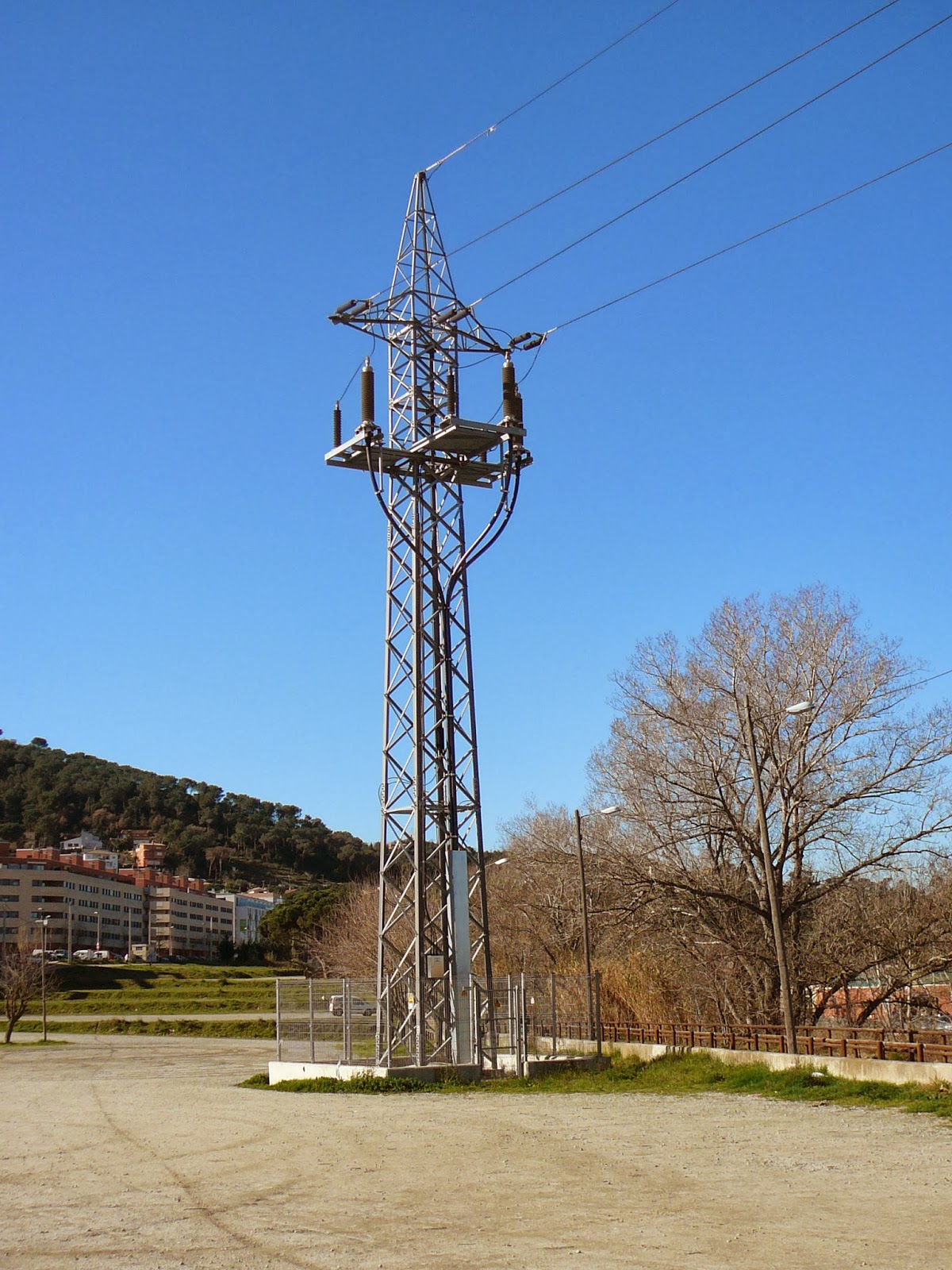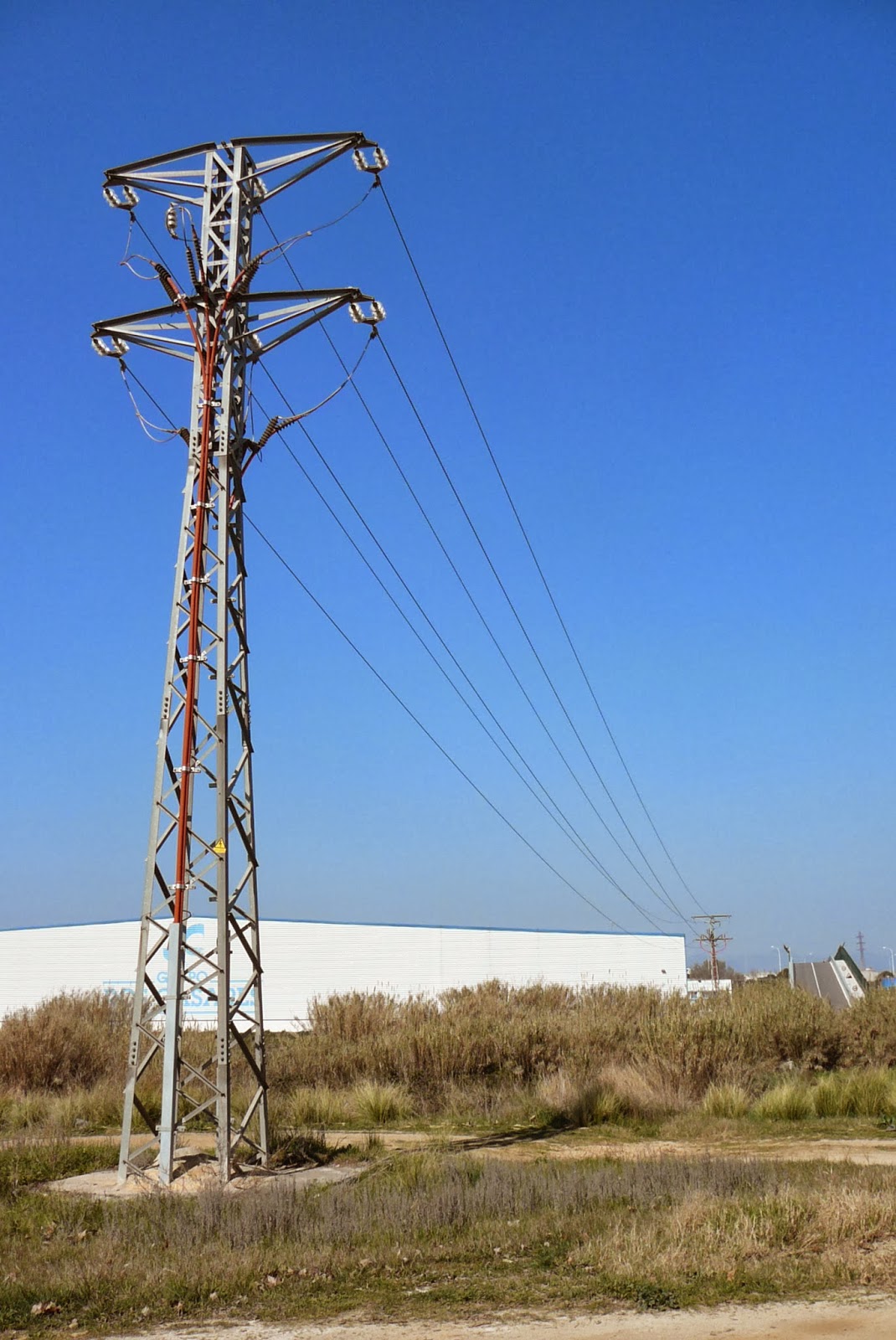PLC has great possibilities for using the yet installed electric system, reducing the investment in the communication system implementation. It is a communication system with important applications in the Smart Grid - mainly in AMI systems. Among others, PLC is well implemented in Automotive Industry with different protocols - as it has been introduced in the blog: Customer Service Strategy.
PLC is in investigation in Avionics technology; one example is taupe project.
Figure 1_Example of Rolls Royce turbine in BerlinTechnikmuseum. PLC is in investigation in Avionics due to increasing of cable harness in aircraft, mainly for being replaced hydraulic and pneumatic systems by electric systems. By this way, changing aircraft voltage levels and control systems, increasing the complexity and wires number. PLC systems are being in investigation for reducing the wire harness._Source; Javier Sanchez Rios.
The use of power network gives issues to transmit data, due to the nature of the electric network performance at low frequency, in Europe at 50 Hz and in North America at 60 Hz.
PLC must coexist with other communication systems - wireless, optical, etc.- operating in the same frequency band in HV, MV and LV. The attenuation to the signal depending upon the distance, the frequency selectivity, high-power impulsive noise presence, with the variation in space, frequency and time, the most important issues for communication achievement.
1_ In first term, it is necessary to think about the implementation of PLC solutions in Smart Cities, naturally, the most implementations in this IoT in the cities are based in wireless communication infrastructure. However for existing infrastructure, PLC can help for implementation of Smart Grids in subterranean infrastructure, where there is no wireless cover.
Furthermore, the application in control of street lighting (for controlling lumen by current control), where the infrastructure is yet installed and besides possibilities for cameras in this street electric infrastructure for traffic or security solutions.
2_ In indoor EV charger mode 1 - 250 V monophasic or 480 V triphasic AC power.
PLC will help to contact in non wireless cover places - subterranean parking, etc., between the on-board to off-board vehicle systems - following IEC 61851-1. Connecting the EV charger to the BMS (Battery Management System) and EMS (Energy Management System) by LIN, CAN-C, CAN-B or FlexRay bus.
After that, the communication from EV Charger to the next electrical point on the ground, is transmitted by wireless communication to ISP (Internet Service Provider) by one router or modem.
3_For critical infrastructure, if the system is supplied by two different electric systems, if one of it is by subterranean line, in case of emergency, the system can supply the electricity and also communication, just in terms of the emergency cases.
PLC is in investigation in Avionics technology; one example is taupe project.
Figure 1_Example of Rolls Royce turbine in BerlinTechnikmuseum. PLC is in investigation in Avionics due to increasing of cable harness in aircraft, mainly for being replaced hydraulic and pneumatic systems by electric systems. By this way, changing aircraft voltage levels and control systems, increasing the complexity and wires number. PLC systems are being in investigation for reducing the wire harness._Source; Javier Sanchez Rios.
The use of power network gives issues to transmit data, due to the nature of the electric network performance at low frequency, in Europe at 50 Hz and in North America at 60 Hz.
PLC must coexist with other communication systems - wireless, optical, etc.- operating in the same frequency band in HV, MV and LV. The attenuation to the signal depending upon the distance, the frequency selectivity, high-power impulsive noise presence, with the variation in space, frequency and time, the most important issues for communication achievement.
1_ In first term, it is necessary to think about the implementation of PLC solutions in Smart Cities, naturally, the most implementations in this IoT in the cities are based in wireless communication infrastructure. However for existing infrastructure, PLC can help for implementation of Smart Grids in subterranean infrastructure, where there is no wireless cover.
Furthermore, the application in control of street lighting (for controlling lumen by current control), where the infrastructure is yet installed and besides possibilities for cameras in this street electric infrastructure for traffic or security solutions.
2_ In indoor EV charger mode 1 - 250 V monophasic or 480 V triphasic AC power.
PLC will help to contact in non wireless cover places - subterranean parking, etc., between the on-board to off-board vehicle systems - following IEC 61851-1. Connecting the EV charger to the BMS (Battery Management System) and EMS (Energy Management System) by LIN, CAN-C, CAN-B or FlexRay bus.
After that, the communication from EV Charger to the next electrical point on the ground, is transmitted by wireless communication to ISP (Internet Service Provider) by one router or modem.
3_For critical infrastructure, if the system is supplied by two different electric systems, if one of it is by subterranean line, in case of emergency, the system can supply the electricity and also communication, just in terms of the emergency cases.
To introduce in the complexity of PLC communication, the PLC signal must be transmitted close to the zero-crossing voltage signal, but not in the same zero-crossing of the voltage signal - due to interference for being electric power.
Figure 2_ Example of secondary substation in remote place which uses wireless communication._Source: Javier Sanchez Rios
It is possible to think about the control of the urban underground subterranean substation, primary and secondary, where the cost of new infrastructure is very expensive, where the infrastructure can be implemented by PLC, and after being in the ground use wireless communication.
Following with subterranean applications, is possible to think about control (by PWM: Pulse-width Modulation) of the speed and torque from the engine in water pump. Where normally is installed underground, and optimizing the performance from the engine for not working only in ON - OFF and then having a longer life cycle.
Similarly, it will be possible to transmit information regarding vibration (possible issues in bearings or rotor), electric information, cameras (even thermography), for getting data, and analyze it, for after being able to have properly predictive maintenance.
At the same time, in the underground infrastructure (sewerage), it is possible to install more sensors for Air quality control, and then, avoiding accidents with professionals who are working in this environment with low levels of oxygen and high level of hydrogen sulphide by the decomposition of organic matter.
In the same way, weather stations and air pollution stations in whatever point in the electric systems will be easy to implement and will give more control of air quality and security in the cities.
Following with subterranean applications, is possible to think about control (by PWM: Pulse-width Modulation) of the speed and torque from the engine in water pump. Where normally is installed underground, and optimizing the performance from the engine for not working only in ON - OFF and then having a longer life cycle.
Similarly, it will be possible to transmit information regarding vibration (possible issues in bearings or rotor), electric information, cameras (even thermography), for getting data, and analyze it, for after being able to have properly predictive maintenance.
At the same time, in the underground infrastructure (sewerage), it is possible to install more sensors for Air quality control, and then, avoiding accidents with professionals who are working in this environment with low levels of oxygen and high level of hydrogen sulphide by the decomposition of organic matter.
In the same way, weather stations and air pollution stations in whatever point in the electric systems will be easy to implement and will give more control of air quality and security in the cities.
Figure 3_ Camera in one central street in Barcelona for controlling traffic._source: Javier Sanchez Rios
3_ It is well known, the Internet by PLC is used, following this application, for home appliances, using Home-plug PLC. Furthermore, PLC can communicate data and to know the possible faults in the appliances by the Vendor, before sending any Technician, and then optimizing Service Performance.
Similarly, time for using it to update the firmware and software of control boards when new version is released. For implementing this data communication by PLC, it is properly, when there is less interference in LV due to low demand, between 1 and 5 of the night (see Figure 4), to transmit information from the PLC to WANAP (ISP: Internet Service Provider) before or after main interrupter of home electric installation.
Figure 5_ Example of electric and communication system by PLC in the interconnection of EV and Smart Grid by PLC. PLC protocols by Automotive Industry and PLC protocols of Smart Grid._source: Javier Sanchez Rios
Figure 6_ Linux option for developing application for CAN Bus. From terminal instruction; make x config._source: Javier Sanchez Rios
Similarly, time for using it to update the firmware and software of control boards when new version is released. For implementing this data communication by PLC, it is properly, when there is less interference in LV due to low demand, between 1 and 5 of the night (see Figure 4), to transmit information from the PLC to WANAP (ISP: Internet Service Provider) before or after main interrupter of home electric installation.
Figure 4_ Example of Electric Demand Tracking where is possible to see the low peak demand between 1 and 5 of the night, the proper time to use PLC applications._Source: Ree (Red Eléctrica de España)
Figure 5_ Example of electric and communication system by PLC in the interconnection of EV and Smart Grid by PLC. PLC protocols by Automotive Industry and PLC protocols of Smart Grid._source: Javier Sanchez Rios
Figure 6_ Linux option for developing application for CAN Bus. From terminal instruction; make x config._source: Javier Sanchez Rios
Bibliography:
1_ El Vehículo Eléctrico - Desafíos tecnológicos, infraestructuras y oportunidades de negocio STA: Sociedad de Técnicos de Automoción - Librooks.
2_ Eficiencia en el uso de la Energía Eléctrica - Circutor
1_ El Vehículo Eléctrico - Desafíos tecnológicos, infraestructuras y oportunidades de negocio STA: Sociedad de Técnicos de Automoción - Librooks.
2_ Eficiencia en el uso de la Energía Eléctrica - Circutor










